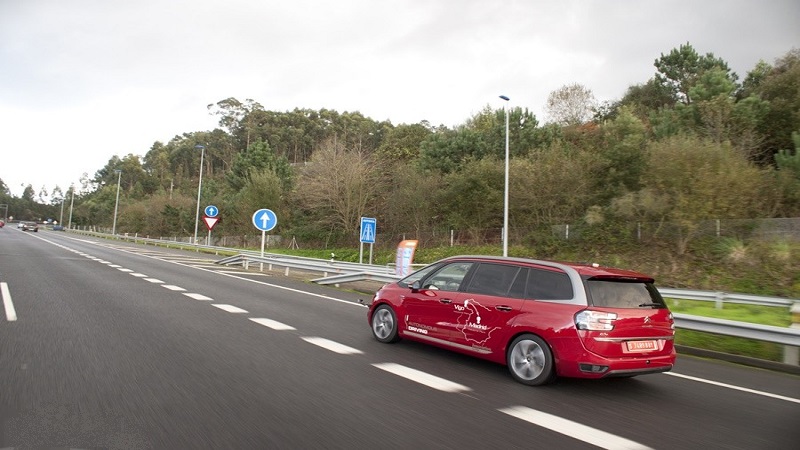The world changes by leaps and bounds. The Poles are melting, the atmosphere is blacker than coal, cities suffer daily collapses and technology are gaining more ground to the very humans. With autonomous driving, we can put twice as many vehicles on the road as there is today without even over-modifying the infrastructure, and almost without realizing this future that seemed so far we are quickly thrown over, as all manufacturers Are announcing their standalone vehicles for five years.
In this context, some thirty of the world’s best scientists will meet next February at the University of California (San Diego, USA) to discuss the most difficult challenges facing robotics and automation, Including among its topics of discussion the future of driving autonomy focused on a mass audience.
Prior to the event, its organizer, Henrik Christensen -senior pictures, the outstanding Georgia Tech engineer who was hired last July to launch the Robotics Institute of UC San Diego, has offered an interview with The San Diego Union-Tribune to confess your opinion about this uncertain future, and as it seemed really interesting today I decided to share it with you to see what you think.
“I want to build a research institute that could be among the top five in the world five years from now. Why cannot we make San Diego the future, Robot Valley,” said Christensen? “. From there, respond to the questions of your interviewer, questions that you may have also asked yourself on occasion or you will do it in less time than you think. Let’s go with it.
Automation and robotics move fast what impact will this have on employment?
In this area, we can differentiate two trends. On the one hand, we will use automation and robotics to create jobs in the manufacture of machines, although these will be abroad, mainly in Southeast Asia. At the same time, we will see how many jobs are replaced by automation, especially in the transportation sector. -Christensen predicts that by 2020 in the United States the transport will be autonomous, where truck drivers and taxi drivers will lose their jobs.
Will there be a net increase in employment or a decrease?
“Honestly, we do not know, ” Christensen says. A recent study of the National Academies talks about this subject, but there was no data sufficiently clear to make clear a result. We only know that there will be many changes. For example, Amazon is starting to print books at its local distribution centers and later, sending them to customers. They print the book; they put the covers and send them. That reduces transport costs and jobs.
You say this is just the beginning of what Amazon will do?
It is already happening. This program has existed for more than a year and the last estimate was that 65% of the books Amazon delivered were printed at its local distribution centers.
You may also like to read: The Evolution Of The Range Rover For More Than 45 Years
In the near future, Amazon also wants to include the food sector and even sells cars of some brands.
But does not this imply that autonomous vehicles are further away than they actually seem?
According to Christensen’s own predictions, children born today will never drive a car. Autonomous cars without a driver will dominate the market in 10 or 15 years. He thinks the major automakers – Ford, GM, and Daimler – are already saying that in five years they will have an autonomous vehicle on the road. That added to the regulation that is becoming more flexible with this type of vehicles and the tests that are already taking place will end in little more than a decade with the drivers.
As a lifelong driver, how do you feel when you think that today’s kids will never have this experience?
We love driving but the question is: How much time do people lose in traffic jams instead of doing something else? In San Diego, the average is one hour a day and logically there are much more congested cities. If we could be more productive it would be beneficial for everyone.
You may also like to read: Volkswagen Golf 1.0 TSI BlueMotion, Driving Efficiency
With autonomous cars, we can put twice as many cars on the road as there is today, all without practically improving the infrastructure.
Does that mean we will need fewer parking spaces?
There would not even be the need for parking in the center of the cities. In theory – speaking within about 20 years – it would be enough to get out of the car and say “Pick me up at 4:00 pm “. Probably we do not even have private cars; the car will be one more service.
And who is going to organize all this to make sure that the highways do not collapse every day?
Precisely what we have to think about is how to effectively carry out this massive transport. We’d like to see trucks that do not drive at rush hour, or McDonald’s and other companies make deliveries outside of peak hours.
Is there a central body that orchestrates the movement of these vehicles?
Christensen’s expectation is that the city of San Diego will charge certain taxes based on the hours in which a vehicle is used. That is if you want to make deliveries at 8:00 a.m., when everyone is on the road, the use of the same will be more expensive, which would lead to an hourly taxi and truck shift. So what will happen? Unskilled workers are the most at risk because they have jobs that can be performed by robots.
You may also like to read: Geneva Motor Show 2017 – Brand New Cars Gallery
Now the question is: Can you relocate those people fast enough so that new jobs are created in manufacturing? In the United States, there are currently about 6 million uncovered jobs and many of these jobs could be filled if people had the right skills, but that is also influenced by people’s willingness and opportunities to acquire those skills. That is why we must ensure that the education of people is high enough to obtain further training. The problem is that all that entails a change of the current political system.
Do you see any disadvantages in the evolution of robots?
Last year, Google was awarded a patent involving personalization of the robot’s personality, and there seem to be some disturbing privacy issues in it. I think we will soon see the robots that learn from us and these will use all our potential data available. After all, people who want a robot in their lives want it to be personalized to their liking but … Who has access to that data? Are they going to be companies like Facebook, Google or Apple? Are we sure they will not abuse this data to try to sell private information?
We have yet to prove that robots cannot be pirated. For now, we have not achieved and we have been very ignorant regarding our privacy, but we are reaching a point where everyone begins to pay attention to this aspect. Unfortunately, I think things have to get much worse before they get better. When hackers have a real impact on people’s private life will be when people make a real stir and seek solutions, but it will not be an easy thing to solve.










